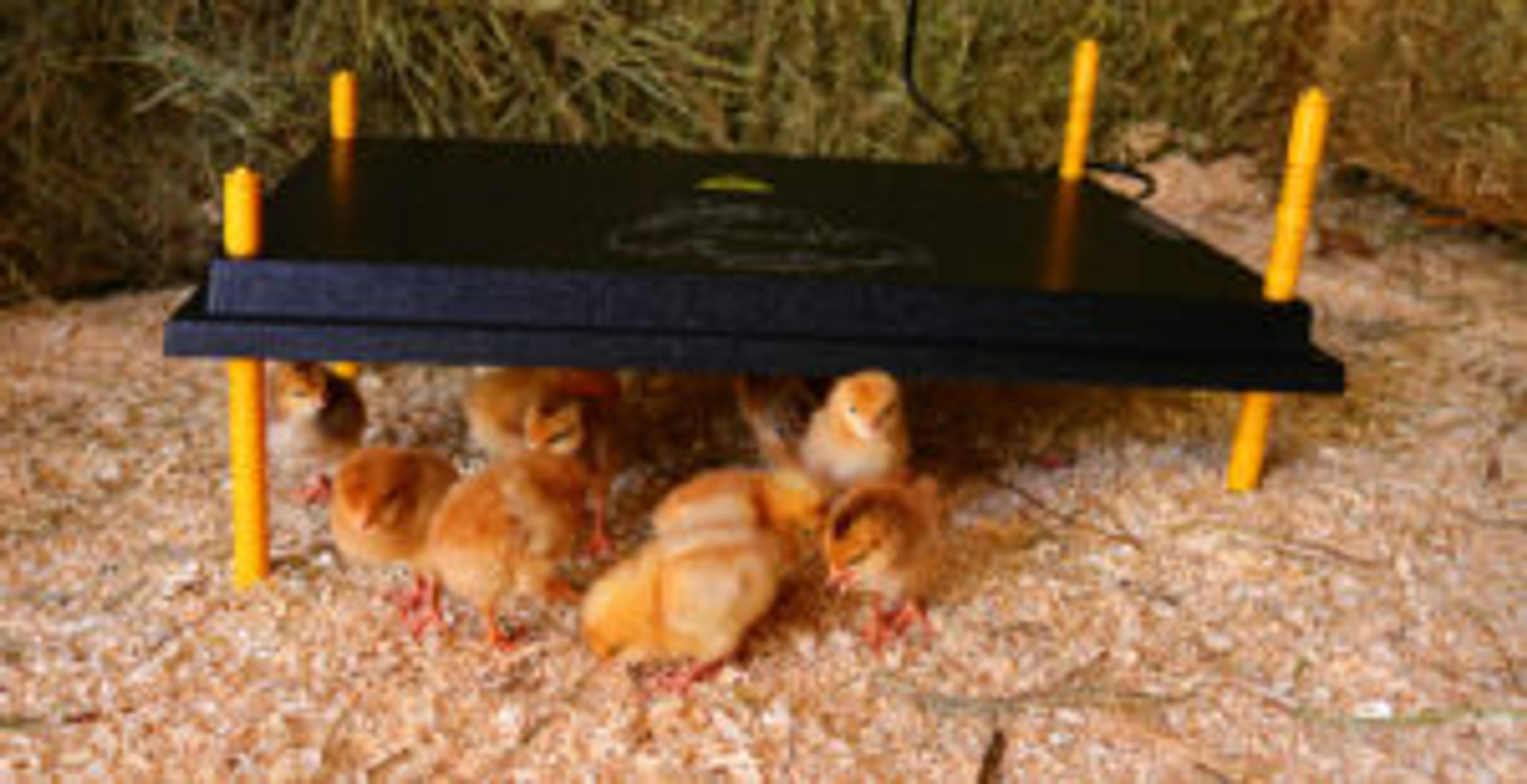Getting Started with Chickens
Thinking about getting started with chickens? This comprehensive guide will point you in the right direction for getting started with chickens. In no time you will be getting started with chickens and heading down the road to the fascinating and exciting world of poultry. Your adventure awaits!
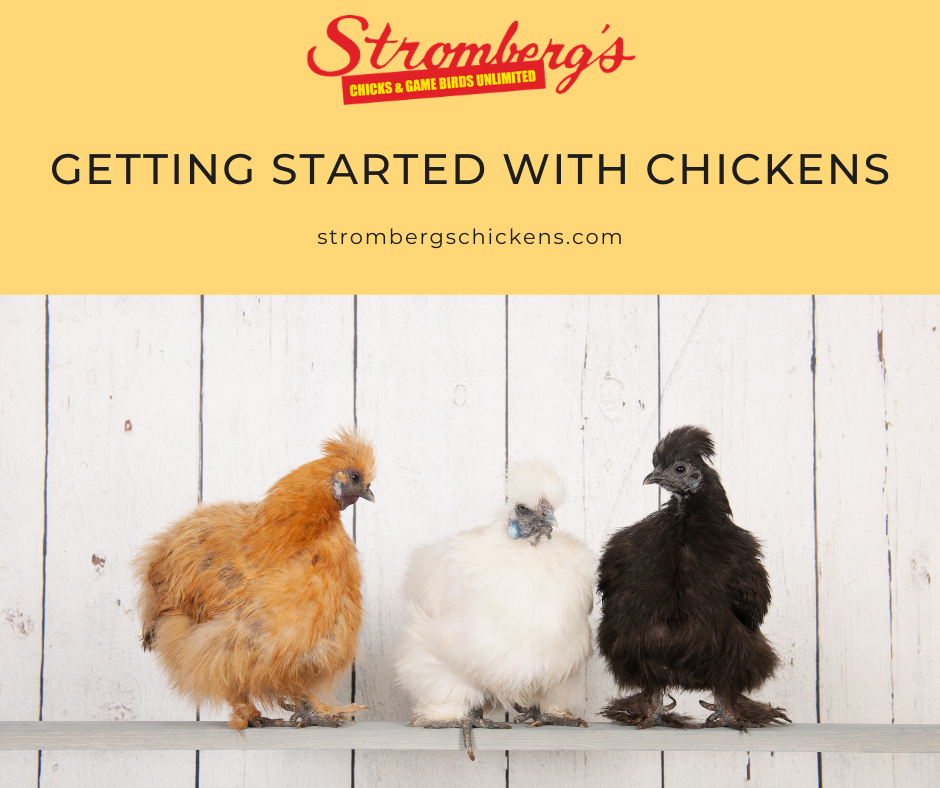
RESEARCH BEFORE YOU START
Education is the first and one of the most important steps in getting started with chickens. Knowing what to expect from raising chickens from the beginning will give you the knowledge and confidence to tackle every aspect of chicken raising chickens and keeping.
Do not underestimate the power of a good book to raise backyard chickens!Storey’s Guide to Raising Chickens,Raising Chickens for Dummies, andThe Backyard Chicken Book are all great options for a starting point to raise backyard chickens.
Also, great minds think alike! If you know someone who already keeps chickens, ask if they’d be willing to share some of their knowledge with you or consider joining a chicken-related social media group.
GET THE RIGHT SUPPLIES
Making sure you have all the bases covered when it comes to chicken supplies is easy. It is important to recognize that chicks and adult chickens have needs that require certain supplies to keep them healthy and happy.
First, let’s discuss what you’ll need to raise chicks to adulthood.
CHICK SUPPLIES
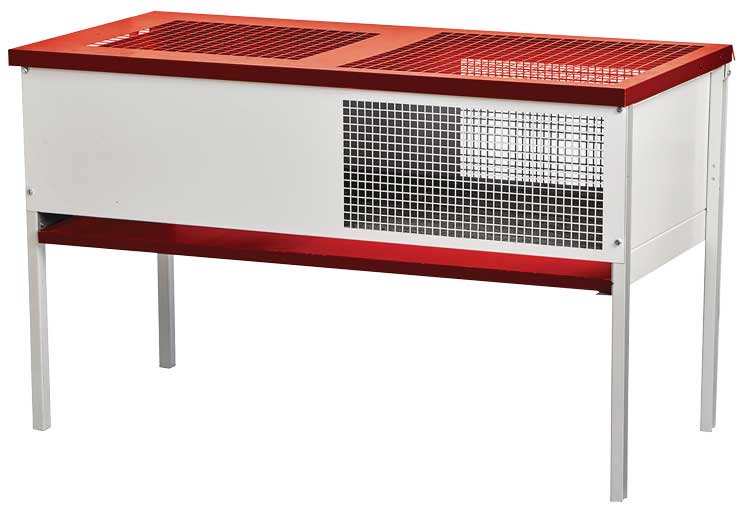
Baby chicks require extra attention when compared to their adult counterparts, but with the right equipment, you’ll be able to raise healthy chicks in no time. Raising chicks will call for items such as a brooder, a heat source, food, and water.
Brooder – A brooder is an enclosed, heated space used to raise chickens or baby birds. It’s used to mimic the mother hen’s warmth.
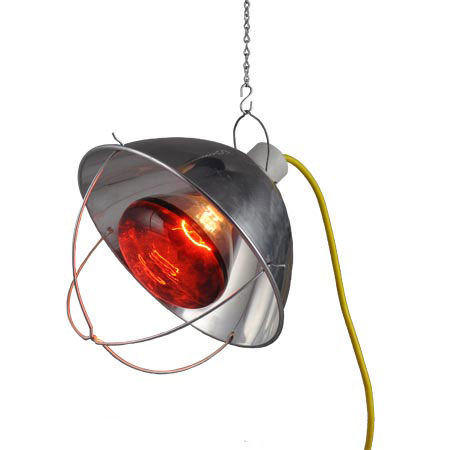
Heat Source – Used to keep your new chicks warm, happy and healthy hens toasty. Just like a swaddled newborn, the heat keeps your chick warm, happy and healthy hens.
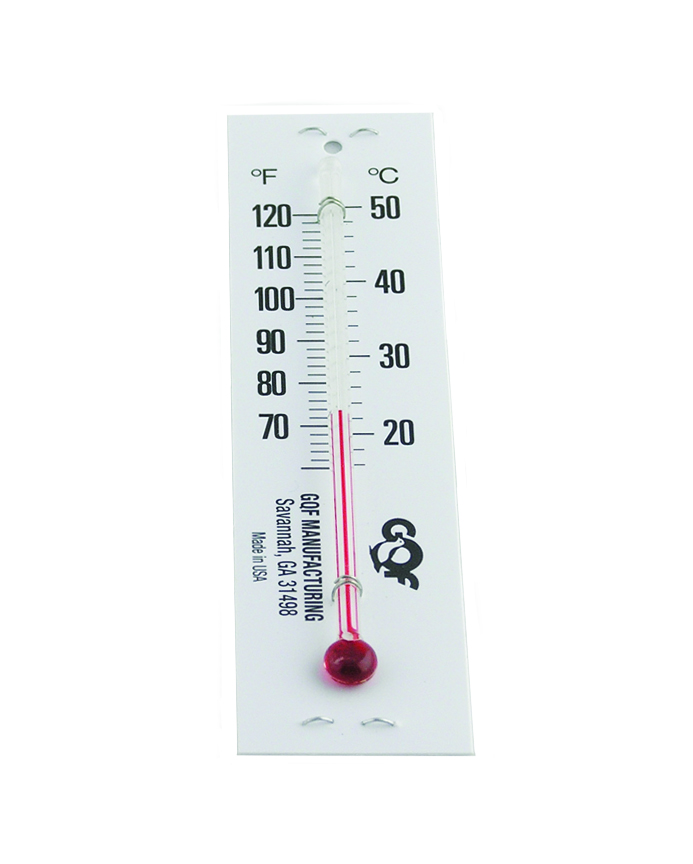
Thermometer – A thermometer makes it easy to ensure your chicks aren’t too warm or cold. Chicks during their first week should be kept at 95° – 90°F with temperatures gradually lowering each week.
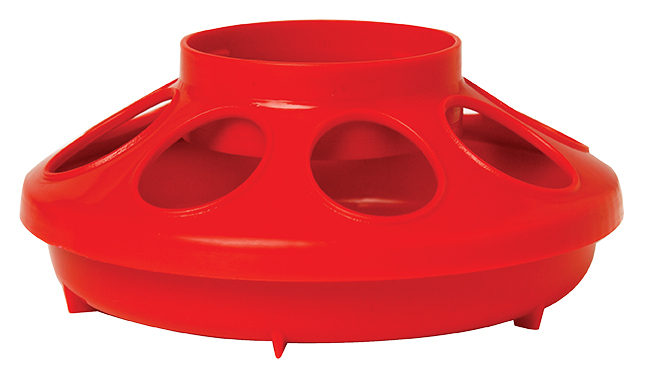
Feeder – Your chicks will need unhindered access to a chick starter feed in a feeder designed for raising chicks alone. This ensures your chicks are getting access to the nutrients they need to grow.
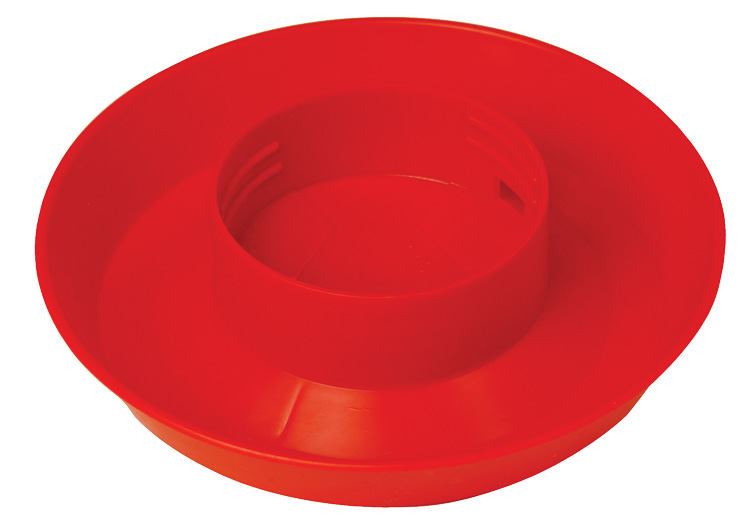
Waterer – Chicks will need access to clean water in a waterer designed for raising chicks only. Chick waterers will prevent drowning and keep any muck out.
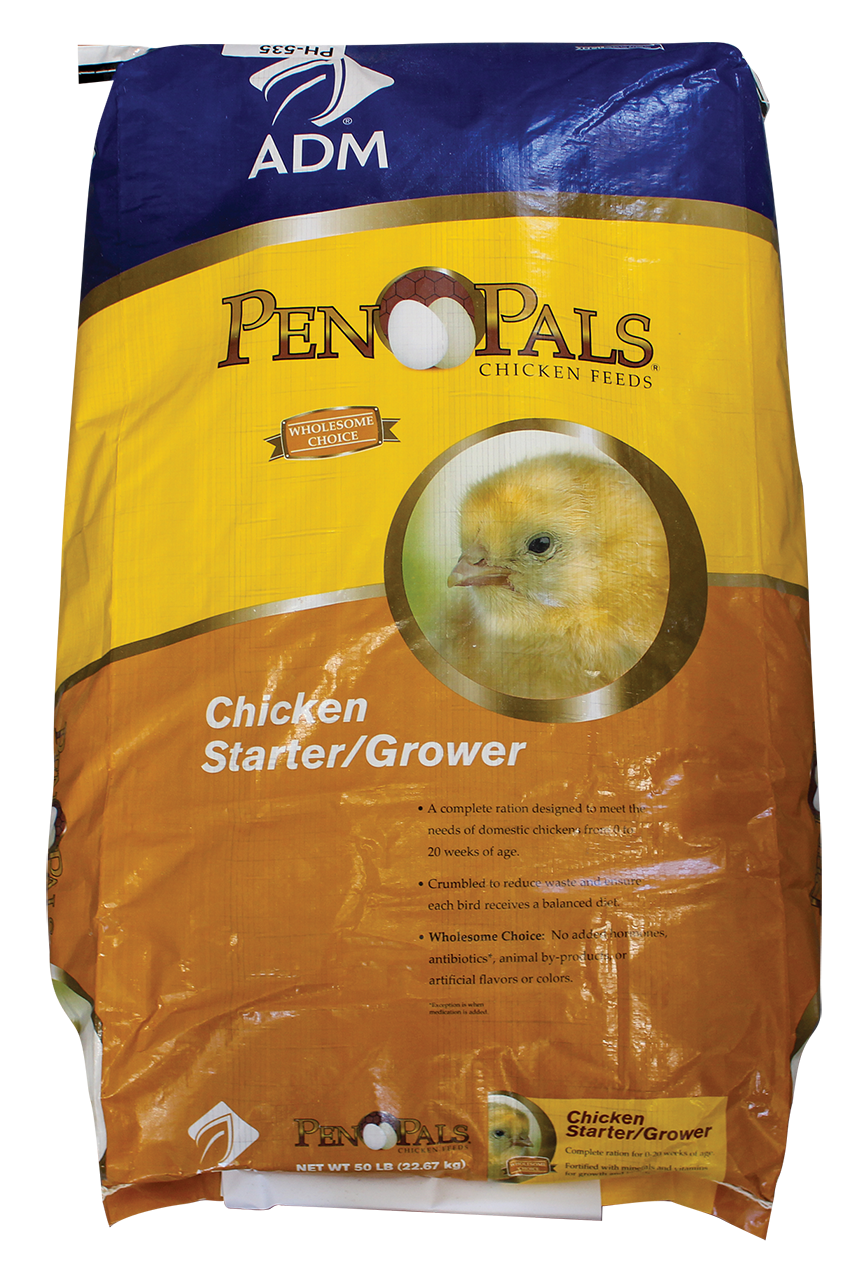
Feed – Use a high protein chick starter feed so that your chicks can grow big and strong. Most chick feeds come in medicated or non-medicated varieties so, if you choose, you can have an organic option for your chicks. The medicated feed contains a preventative dose of medication to assist chicks fighting coccidiosis, a very common chick disease.
Chicken Supplies
Adult chickens will also need some specific supplies to remain healthy and happy. Housing, space, feed, water, and appropriate supplements should be considered to raise a hearty flock healthy adult chickens.
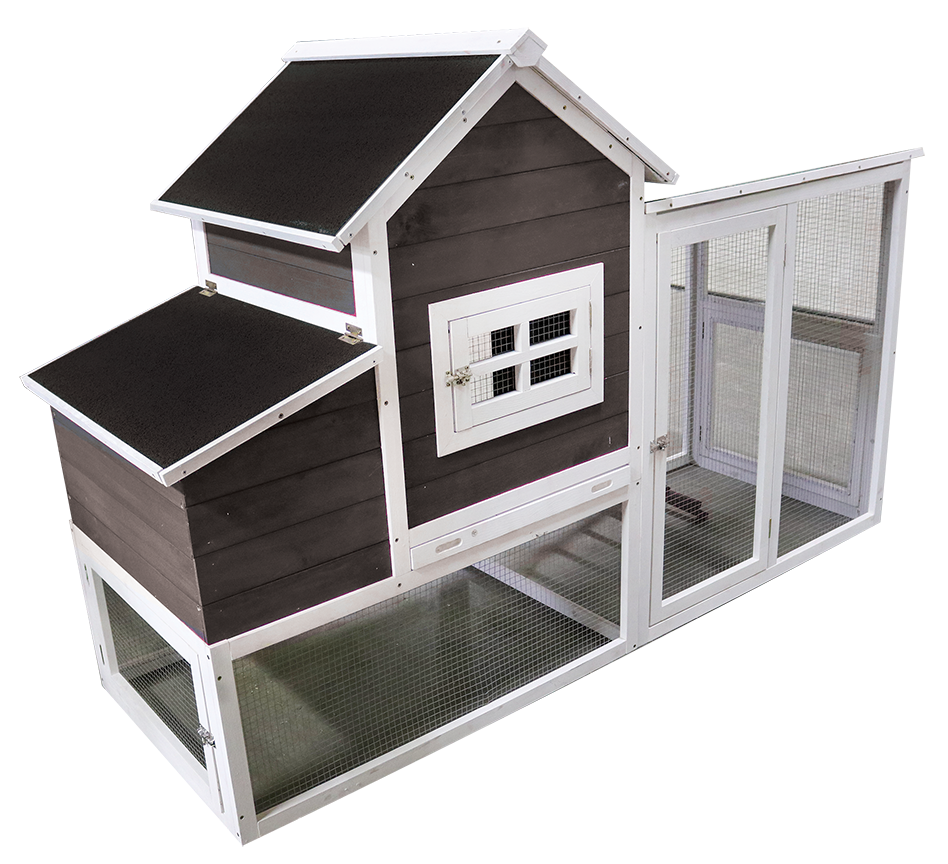
Coop – Your chickens will need a house to keep them safe from weather & predators and provide sleeping & laying quarters. Even a chicken coop, if you intend to free-range your chickens, they still need a place shelter.
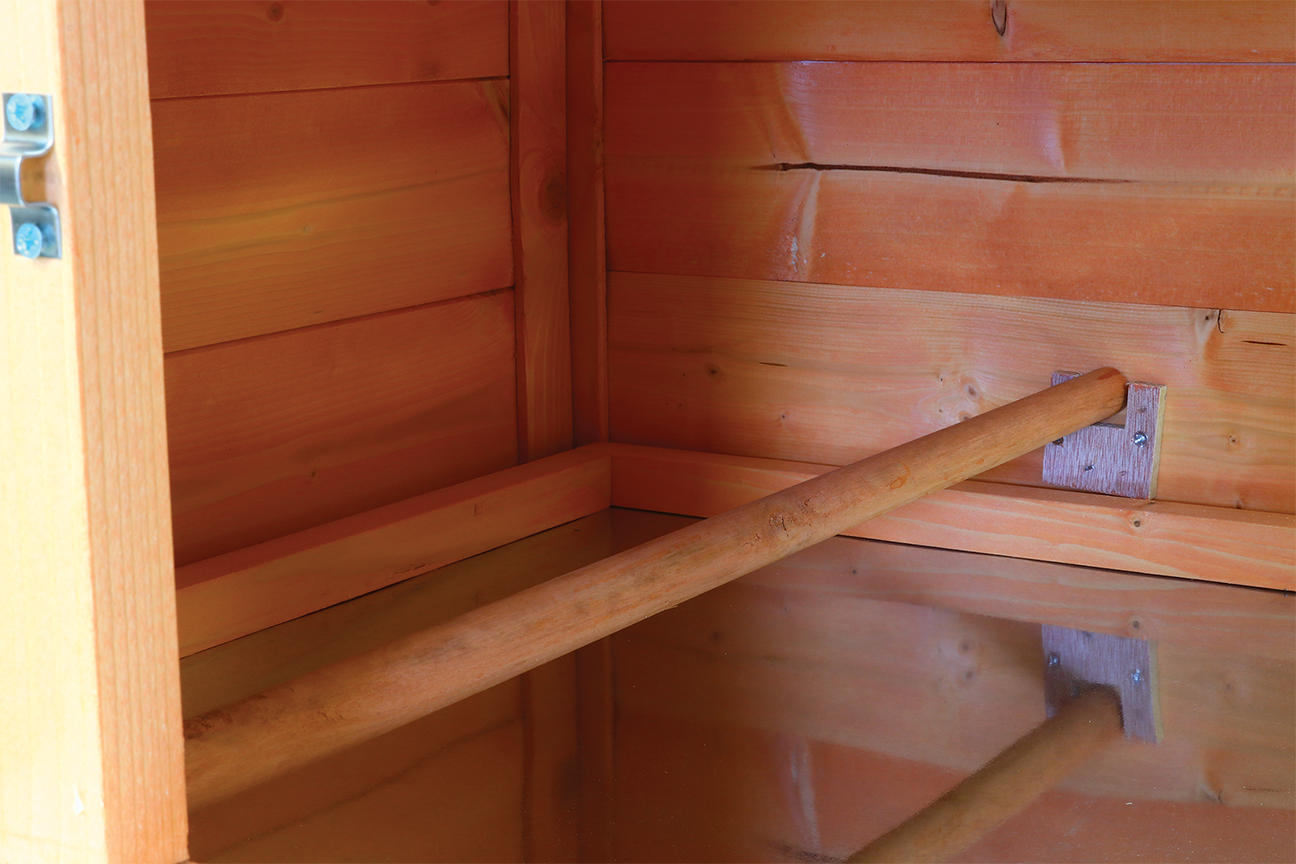
Chicken Space – Chickens need a recommended 2-3 square feet each inside their chicken coop too. Overcrowding can lead to aggression and is unhealthy for your birds.
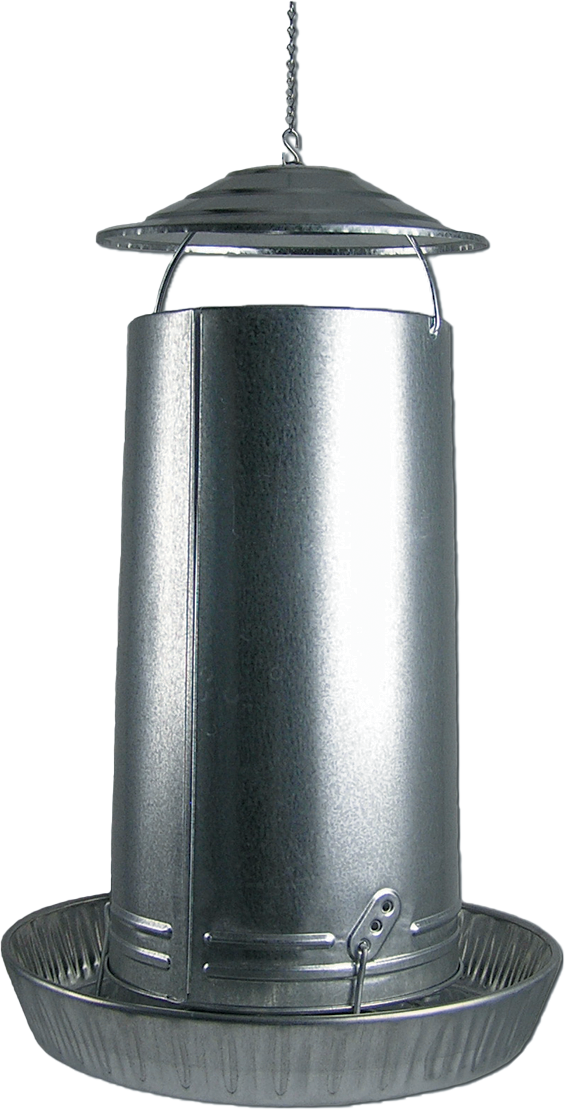
Feeder(s) – There are many varieties to suit your flock’s needs such as flock size, poultry breeds, and feed type. Also, multiple feeders may be a good option to accommodate your flock’s size and prevent aggression.
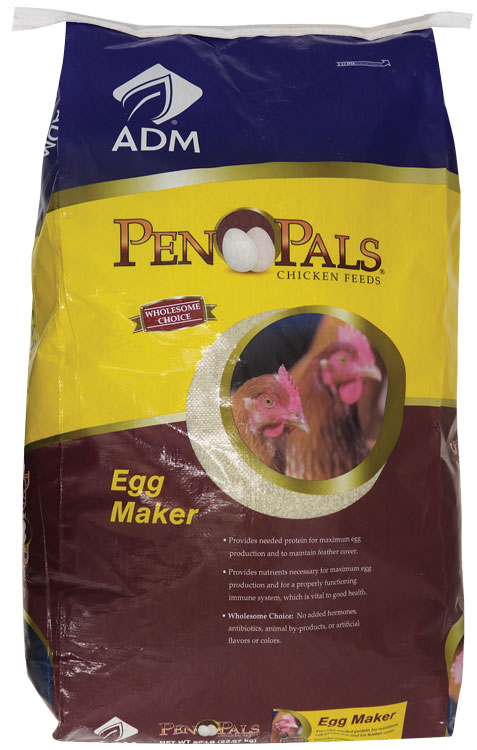
Feed – Feed type depends on your chicken flock and their main purpose. Chickens used primarily for eggs will need a layer feed while birds for meat production will need a higher protein content provided in a meat bird feed.
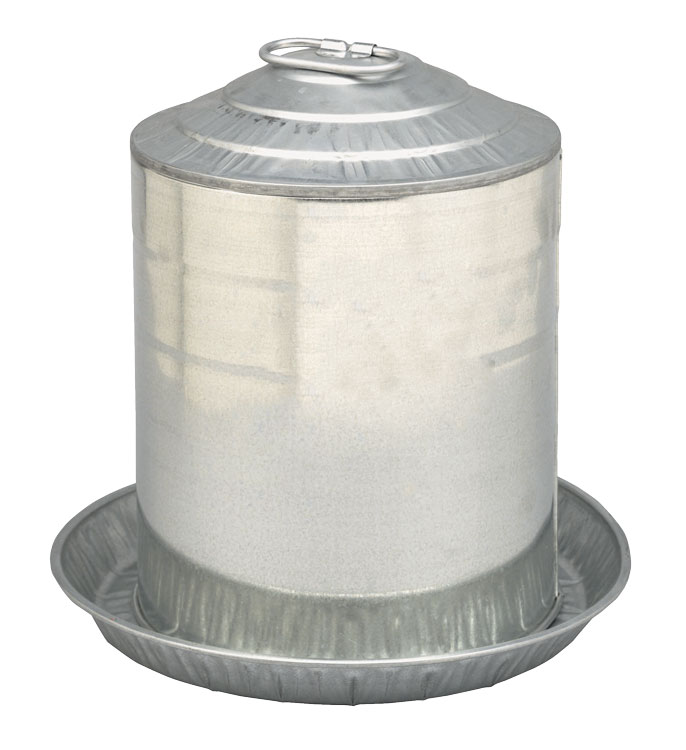
Waterer(s) – Just like feeders there are many styles out there to suit your flock. One thing to consider is that your chickens will also need fresh water in the winter. If you live in a cold climate, a heated model is advised.
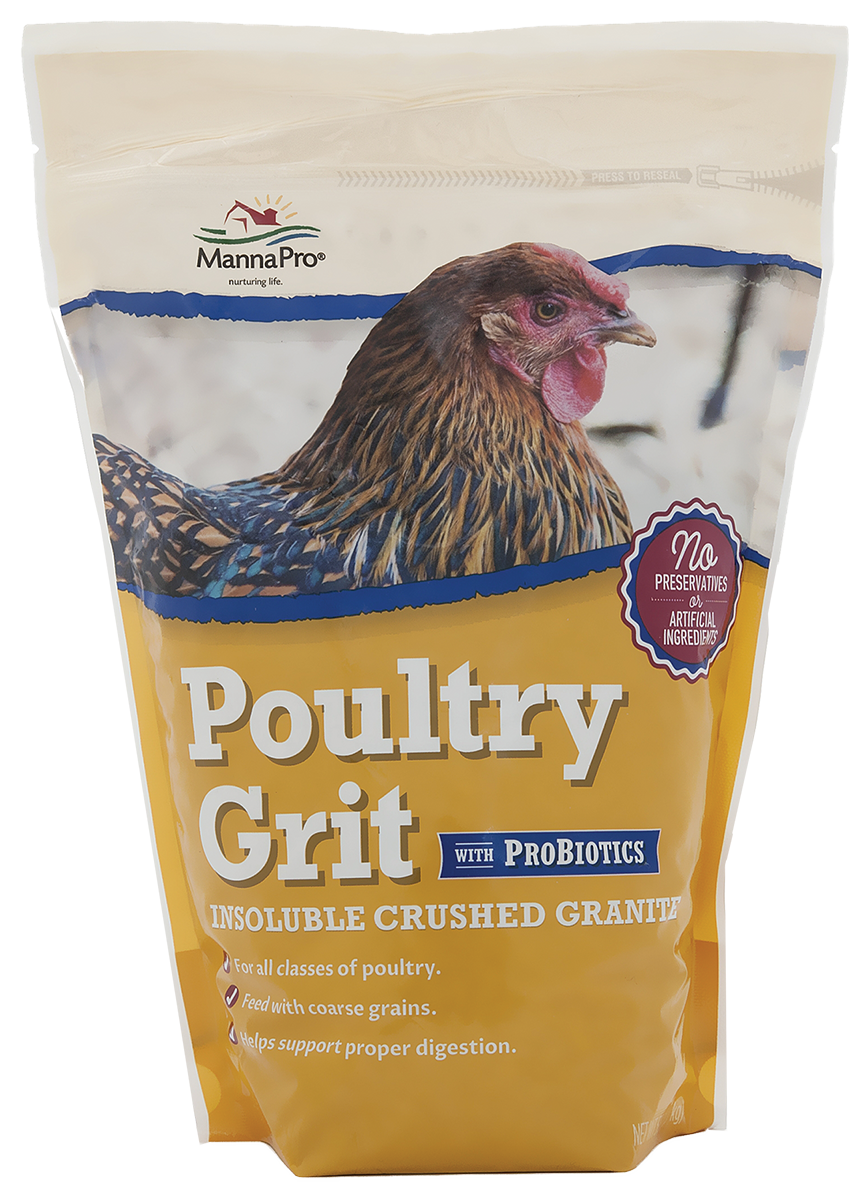
Grit – Grit is a hard substance given to chickens to aid in digestion. This should be available to adult chickens in your flock at all times for them to intake as needed or they may develop digestive issues.
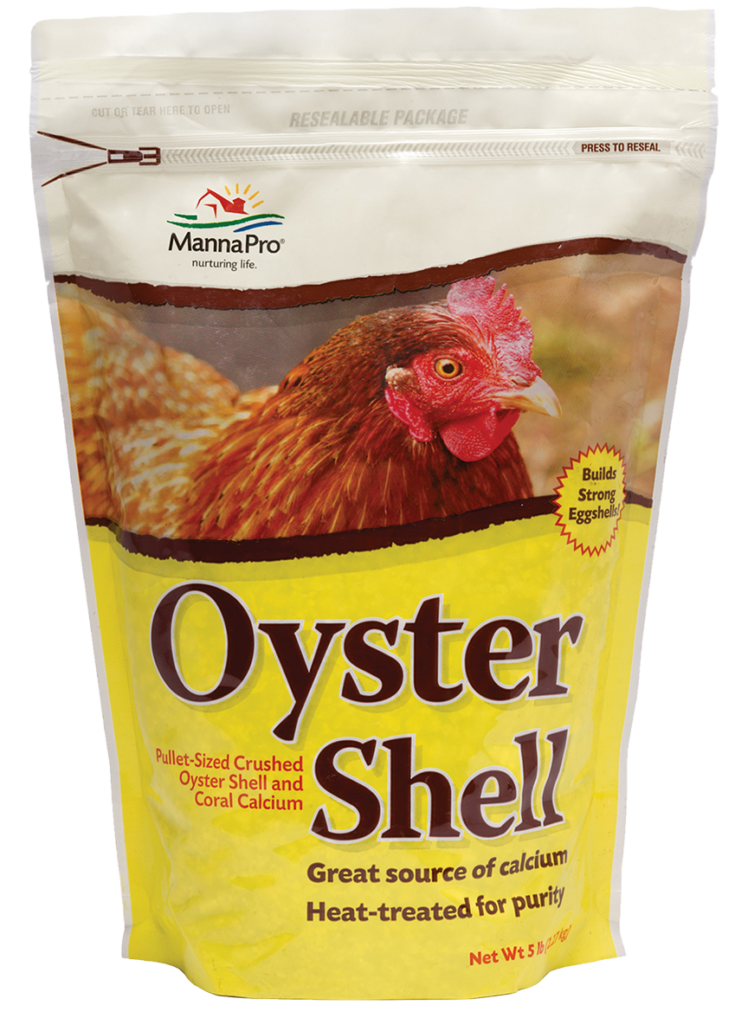
Oyster Shell (Calcium Source) – Oyster Shell is used as a calcium source keeping chickens. It’s very important to have this available to your flock keeping chickens at all times, especially in egg-producing chickens so they produce strong shelled eggs.
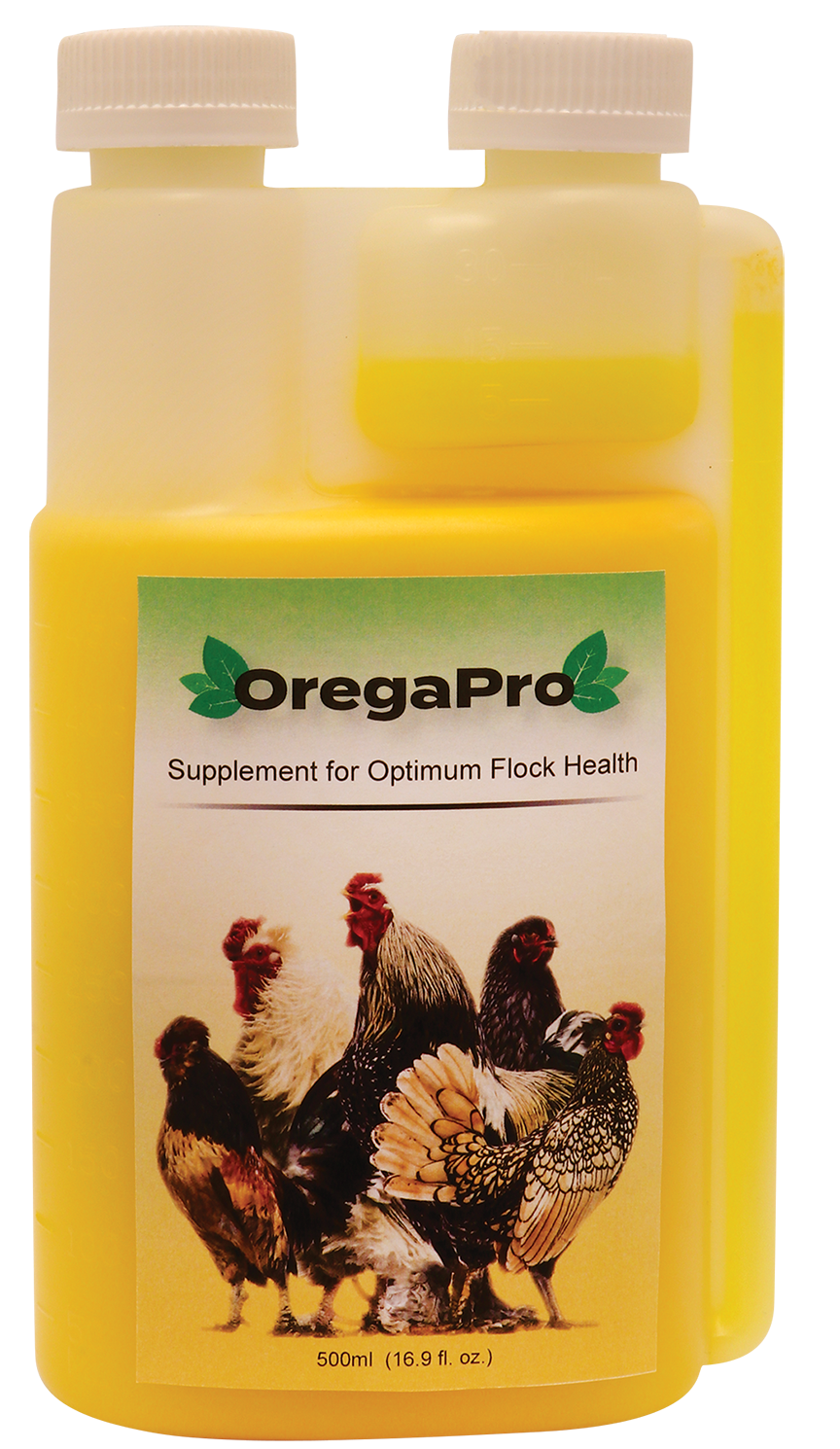
Supplements– Supplements such as ProBiotics or an essential oil option like OregaPro can be beneficial to the overall health of your chickens. They may prevent disease and promote healthiness in healthy chickens in your flock.
CHOOSING YOUR CHICKENS
The most fun part of getting started with raising backyard chickens, is choosing your birds. Some things to consider are if you want birds for egg-laying, meat production, dual-purposes, or for ornamental purposes. Also, consider checking out our Chicken Breed Glossary below!
EGG LAYERS
Layers fresh eggs are generally a smaller bird that will lay between 250 – 280 eggs per year. They will begin to produce at 5 months of age and will continue for three to six years. In reality, the first year of production is the most fruitful and there is a decline in egg production after the first season.
You can choose between brown and white egg layers. The Leghorn is the recommended of the white egg layers however they are not always the most people-friendly. Other breeds laying white eggs include Minorcas, Anconas, and California Whites.
The Production Red is the best of the brown egg layers. This hybrid bird is a cross between Rhode Island Reds and New Hampshire. Rhode Island Reds and New Hampshires are good brown egg layers. The Sex-links are very productive hybrid brown egg layers as well.
MEAT BIRDS
The Cornish Rock Cross is the meat production bird. This breed is a cross between Cornish and Plymouth Rock. The Cornish Rock Cross will consume two pounds of feed for each pound gained. Broilers/fryers are butchered at three and a half to five pounds, and roasters are butchered at six to eight lbs.
The sooner a bird makes the weight gain, the more economical it is to to raise chickens. Brahmas, Cochins, and Cornish are also considered meat and egg production birds. However, these breeds will take much longer to reach butcher weight.
DUAL PURPOSE
These birds are a compromise between the egg layers and the meat producers. They generally don’t put on weight as fast as the meat breeds nor do they lay as many eggs as the egg layers – they are typical of backyard chickens and flock type birds.
You will have a nice supply of fresh eggs, and the excess roosters and older hens will provide a delicious chicken dinner. Dominiques, Plymouth Rocks, Sussex, Orpingtons, and Wyandottes are examples of dual-purpose birds. Dual-purpose birds are generally hardy and self-reliant. They lay brown eggs and will brood their chicks.
ORNAMENTAL
The fourth type of the chicken breeds you will want to consider is the ornamental or exhibition fowl. These birds are bred for their appearance and how they conform to the standards of the American Poultry Association and the American Bantam Association than their economic value.
LOCATION
Consider your location when picking chicken breeds. Climate is a factor as some birds do not do well in colder conditions, the same can also be said in regards to the heat. Also, some urban chicken breeds and keepers have to abide by local/city regulations which may limit the size, sex, or amount of birds one may keep.
Keep these factors in mind when picking out your flock.
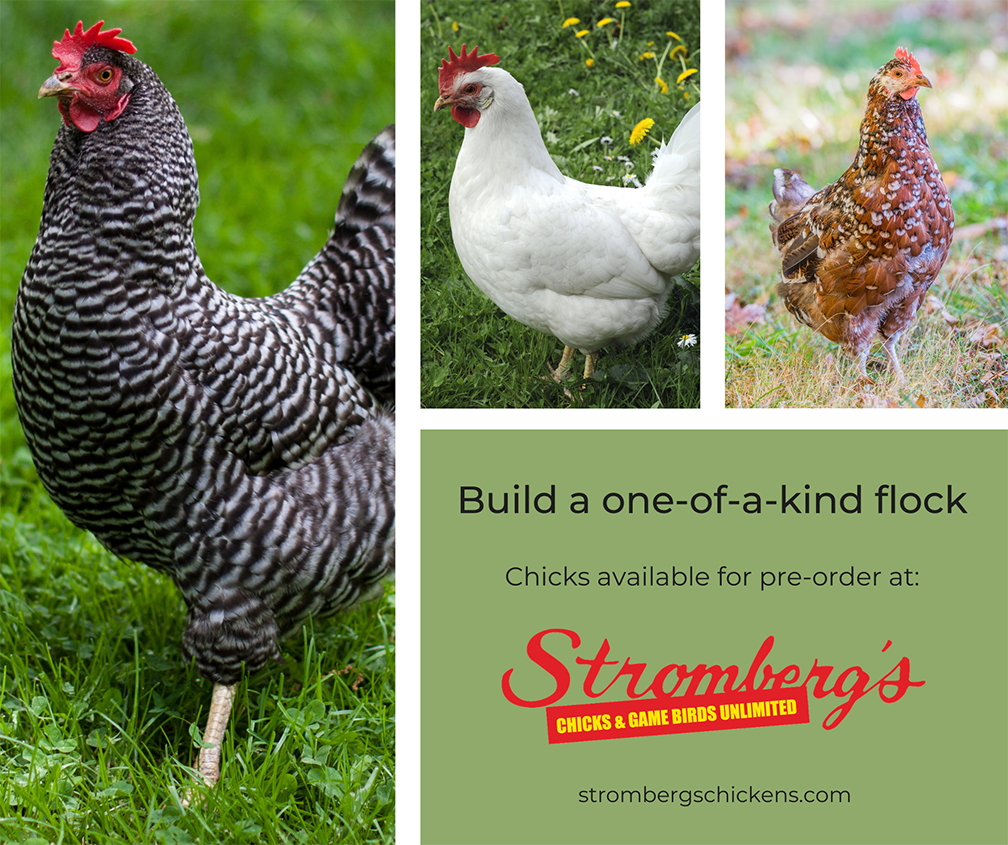
ORDERING YOUR BIRDS
Ordering live birds is easier than you think. Though it’s very important to remember to pre-order your birds or your selected breeds may sell out. Consider if you would like your chicks to ship to your local post office or if you are near a Stromberg’s Store location you may want to pick-up your chicks from one of our Chick Days.
SHIPPING YOUR CHICKS
If you choose to have your chicks shipped to your local post office, no worries, chicks have been shipped this way safely for decades, and at Stromberg’s, we have this down to a science. So much that we are even a member of the Bird Shippers of America.
When your chicks have conveniently arrived at your local post office, they will give you a call to let you know your precious cargo has arrived for pickup.
PICKING UP YOUR CHICKS
If you live near a Stromberg’s Store location, you’re in for a treat! Your chicks will be shipped directly to your store location, tended closely by our skilled staff, and ready for your arrival. On hand will also be our knowledgeable sales associates for questions and for any additional supplies you may need.
ORDERING YOUR CHICKS
You can pre-order your chicks for shipping online or place your order with our expert, friendly staff over the phone. Once we have your order, we assign you the earliest available date for the combination of birds ordered.
If you have ordered online or have an email with us, we will email you when your order will be available. In case we do not have your email on file, we will call you with delivery information.
If you are pre-ordering your chicks for one of our Chick Day events, you may also order online or over the phone. Variety is the spice of life so we will be offering a different line-up of chicks each week. Order soon for your choice of breed, because once they’re sold out, they’re gone for that event!
GOOD CLUCK ON YOUR ADVENTURE!
Getting started with chickens is a fun and wonderful adventure you don’t want to miss out on. Whether raising birds for fun or looking to harvest eggs or meat, there’s a bird out there for someone! Be sure to Join the Flock and receive notifications on more helpful Stromberg’s blog posts, sales, and promotions.

